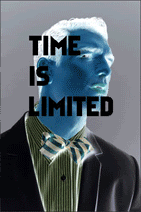 Born in 1860 with a cleft lip, Louis Wain did not receive an education until age ten, thanks to the dubious advice of a family doctor who felt it wouldn't be suitable for young Wain to be around other children. After finally enrolling in school, Wain usually cut classes and spent his time exploring London.
Born in 1860 with a cleft lip, Louis Wain did not receive an education until age ten, thanks to the dubious advice of a family doctor who felt it wouldn't be suitable for young Wain to be around other children. After finally enrolling in school, Wain usually cut classes and spent his time exploring London.Given this background, it is surprising that Wain developed into a talented artist. As a young man he supported his family through freelance illustration work, focusing on pastoral scenes. However, the field of freelancers was crowded, and Wain struggled to find prominence.
In 1883, he married Emily Richardson, but their happiness turned to tragedy when she became ill with cancer three years later. They found some comfort in the companionship of their much-loved pet cat, and Wain was inspired to make some cat drawings.
 While his earliest illustrations were entirely naturalistic, Wain transitioned to amusing cartoons of anthropomorphised cats in order to boost his wife's spirits. Before she died, Emily Wain made her husband promise to continue drawing cats. Despite his grief, he devoted himself to his work. Gradually, the cats became even more human and were shown playing soccer, planning parties, and other merry activities. Wain submitted these illustrations to various newspapers, and eventually a Christmas-themed piece was bought by the London Illustrated News. There followed a flurry of production, in which Wain's illustrations were featured in several newspapers, magazines, and countless greeting cards. Unfortunately, Wain was credulous and naive when it came to the sale his artwork, and as a result he frequently received inadequate compensation. Often he lost the rights altogether.
While his earliest illustrations were entirely naturalistic, Wain transitioned to amusing cartoons of anthropomorphised cats in order to boost his wife's spirits. Before she died, Emily Wain made her husband promise to continue drawing cats. Despite his grief, he devoted himself to his work. Gradually, the cats became even more human and were shown playing soccer, planning parties, and other merry activities. Wain submitted these illustrations to various newspapers, and eventually a Christmas-themed piece was bought by the London Illustrated News. There followed a flurry of production, in which Wain's illustrations were featured in several newspapers, magazines, and countless greeting cards. Unfortunately, Wain was credulous and naive when it came to the sale his artwork, and as a result he frequently received inadequate compensation. Often he lost the rights altogether.After a stint in New York City doing a cat-themed comic-strip for the loathsome William Randolph Heart, Wain found himself broke and unable to sustain the whimsy of his previous work. He returned to London, where he learned that his mother had died in the 1918 flu pandemic. Unable to cope with his grief, Wain began to fray at the seams and his mental health declined. Accordingly, his cats no longer beamed with humor, and instead radiated paranoia and dread. Wain's relationship with his sisters deteriorated as he became obsessive, reclusive, and unstable.
By 1924, Wain had become violent and was committed to a mental institution. He spent the following years oscillating between calm lucidity and angry incoherence. The commonly accepted theory is that Wain had developed schizophrenia, but in lieu of a proper diagnosis it is impossible to tell what had happened to the poor man. When word spread that the once-famous illustrator was languishing in a drab hospital room, there was outrage amongst his fans and admirers, including such influential figures as the legendary science-fiction writer H.G. Wells.
At the behest of Wells and others, Wain was transferred to a far more a comfortable mental hospital. While Wain never recovered from his illness, the change of environment had a pronounced effect on him and his mood swings ended. Instead, he lived in quiet dementia, tending to a garden and caring for several pet cats that the hospital allowed him to keep. He also returned to art and produced many new beautiful illustrations. The pieces that he produced at the end of his life were highly abstract, and dazzlingly elaborate, and yet the familiar face of a cat is instantly recognizable.
Wain died on July 4th, 1939. His work is highly collectible, especially amongst both cat fanciers and psychology enthusiasts.










